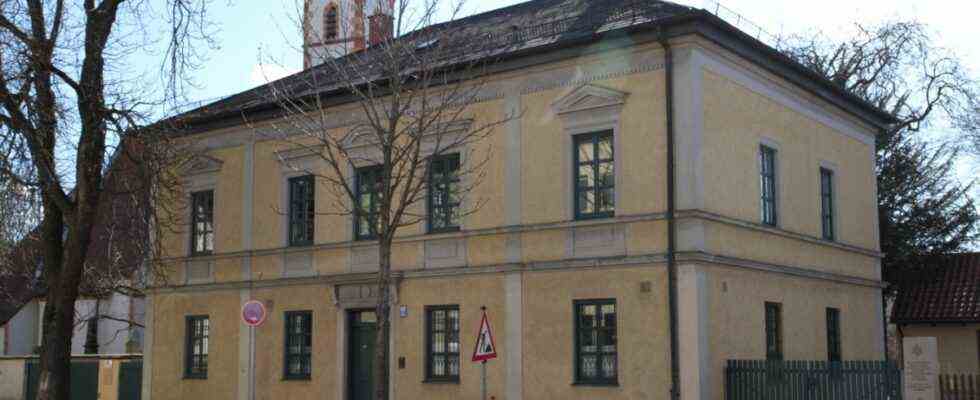The future of the listed rectory, in which Joseph Ratzinger, who later became Pope Benedict XVI, lived for a short time as a young chaplain in 1951, has been decided. The building at Pelkovenstrasse 60, which is in dire need of renovation, is to be turned into a purely residential building. According to Armin Ziegler (SPD), chairman of the subcommittee on construction, environment, climate and economy in the district committee (BA) Moosach, the building is to be largely gutted and divided into three apartments. Outwardly, it remains almost unchanged. A small apartment is to be built on the ground floor on the west side, where a stele reminds of Ratzinger’s stay. The remaining part will be connected to the entire first floor via a staircase. The top floor will also be converted into an apartment and the hipped roof will be renewed.
On the south side facing Moosacher Sankt-Martins-Platz, a balcony will be built on the first floor and two dormers on the top floor. The “half-dead ash and dead oak” would have to be felled. In return, the district politicians want replacement plantings. “Apartments are always good,” said BA chairman Wolfgang Kuhn (SPD), commenting on the plans.
The Archdiocese of Munich and Freising had, in agreement with Pastor Martin Cambensy von Sankt Martin, tendered the almost 760 square meter plot of land under heritable building rights, combined with the takeover of the existing building stock. No need to report to the former rectory, and the Pfarrpfründestiftung was not in a position to renovate the building for economic reasons, it had been said.
The striking building, erected in late Classicist style in 1879/80 in the immediate vicinity of the historic Sankt-Martins-Kirche – one of the oldest, if not the oldest still existing church in Munich – was first a poor house of the former municipality of Moosach. Downstairs it housed a gendarmerie station, and chaplains were housed on the first floor. The associated wash house served the law enforcement officers as a detention cell. In 1909 the parish gave the house free of charge to the St. Martin Moosach Catholic Parish Foundation. The individual monument in the protected ensemble in the old Moosach town center has been empty for a good five years.
A GbR, a civil law company, is said to have received the bid from the pheasantry. The minimum bid in the tender was 800,000 euros, the lower limit of the ground rent was 12,800 euros per year for the property, and the archdiocese had ruled out a purchase in full ownership. According to reports, the renovation will cost more than two million euros.
The archdiocese’s press office will keep silent about the actual price and the leaseholder upon SZ request. She only informed that the contract for the award of the house had been notarized on July 2nd. The other party is a private person whose names and leasehold conditions cannot be given for data protection reasons.
It should be clear that the future residents will not fare like the future Pope. For the young Ratzinger Moosach was a “dream village in the middle of the city”, but his domicile is said to have been extremely cramped, with no running water, only with old enamel washware.

